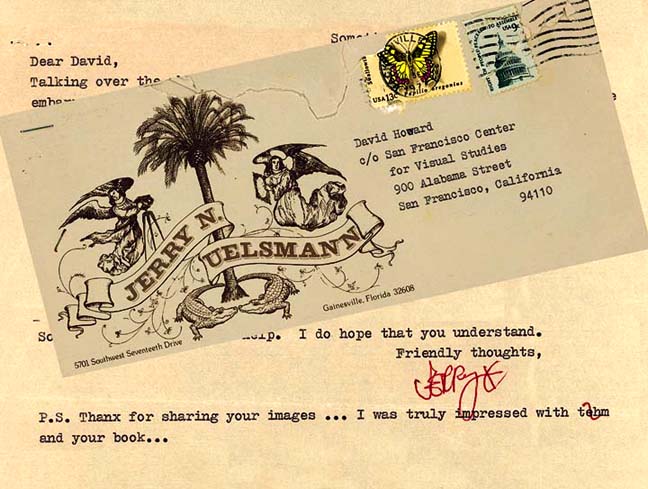 |
DAVID HOWARD INTERVIEWS JERRY UELSMANN JERRY UELSMANN: BORN 1934 STARTED PHOTOGRAPHY 1947 QUESTION #1 DH: How do you feel photography, as an art form, has changed in your life time? ANSWER JU: People’s perception of photography, as an art form, has changed radically in my life time and, as a result, a larger audience for photography now exists. Also; a greater number of artists are seriously using photography as an art form. Photography is evolving in universities where photographers have more contact with artists who use other mediums which develops into healthy creative interchange that makes people aware of just how viable the medium really is! I feel there is currently a renaissance in photography! |